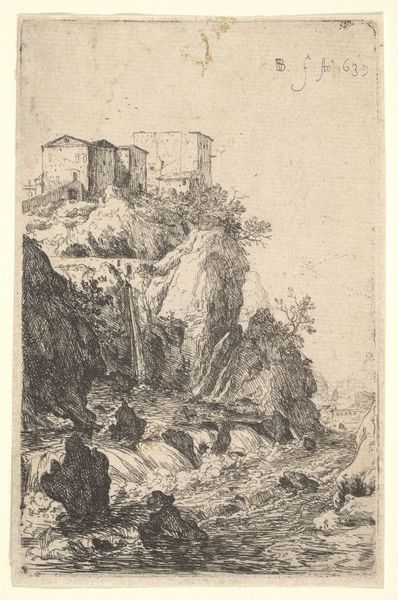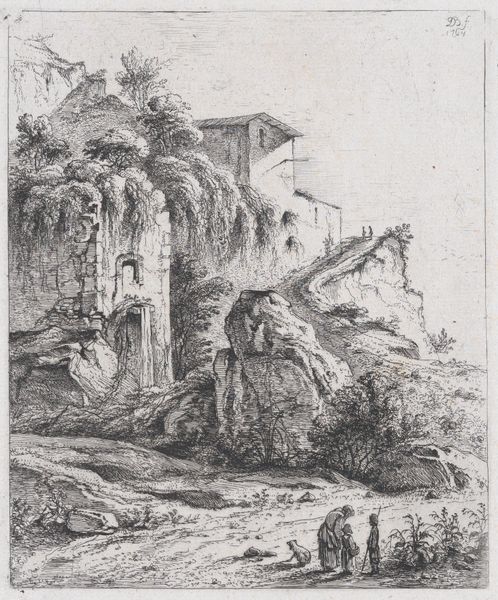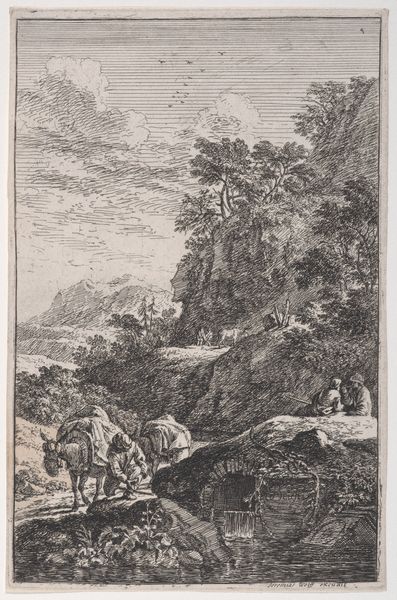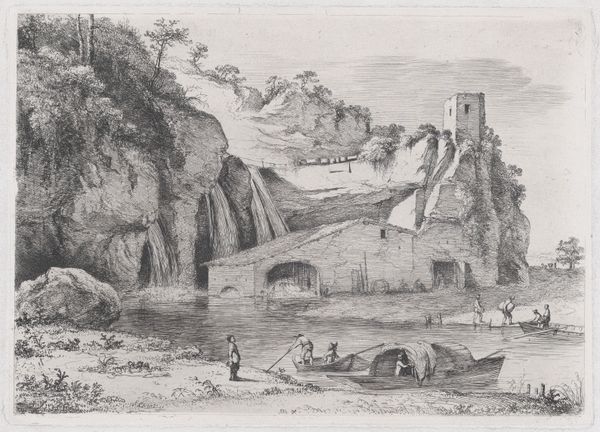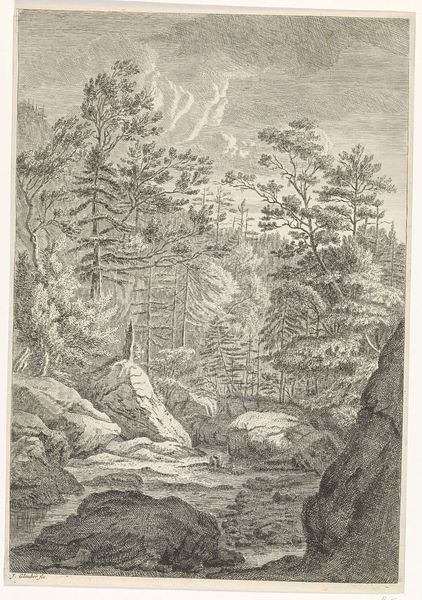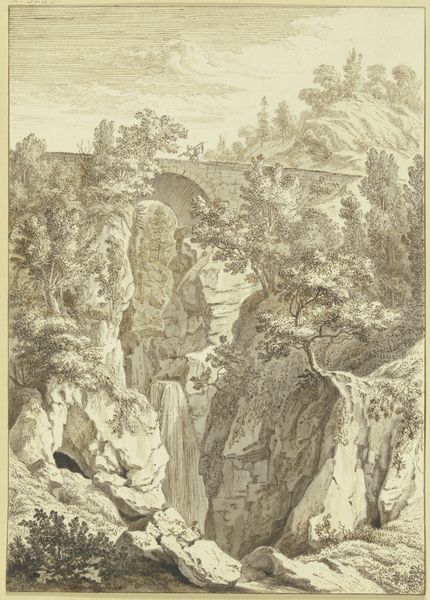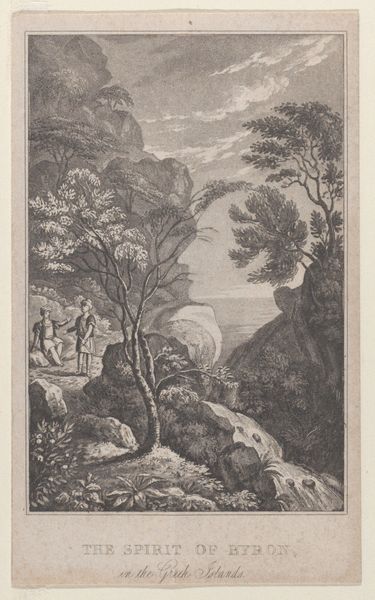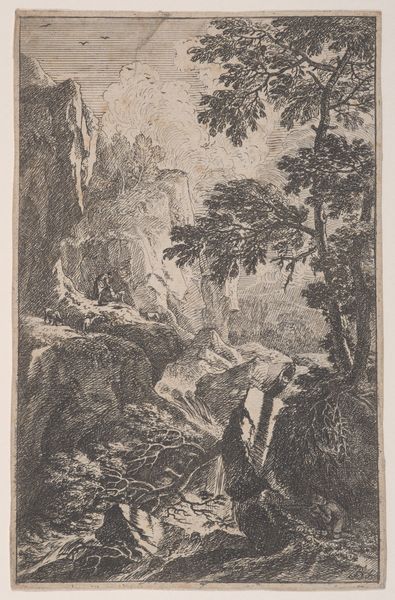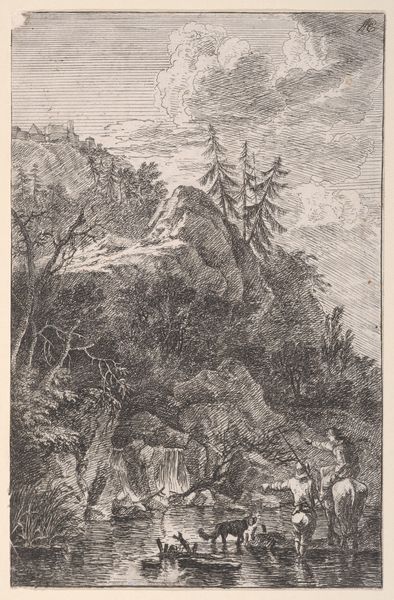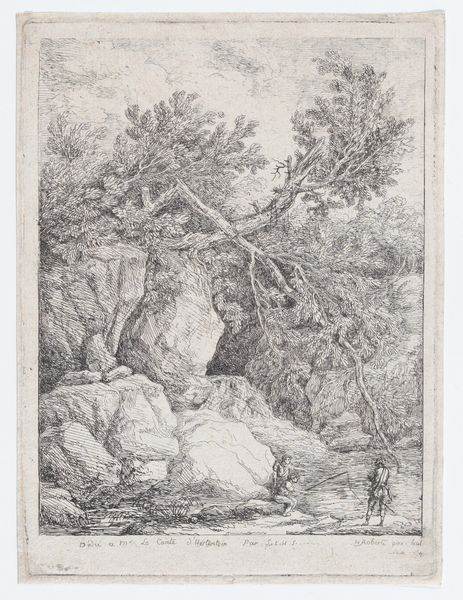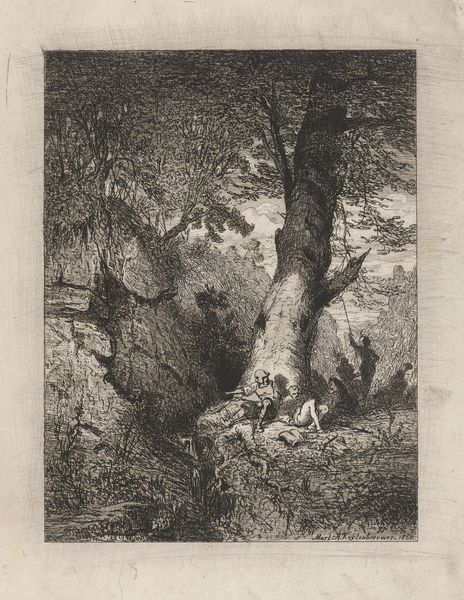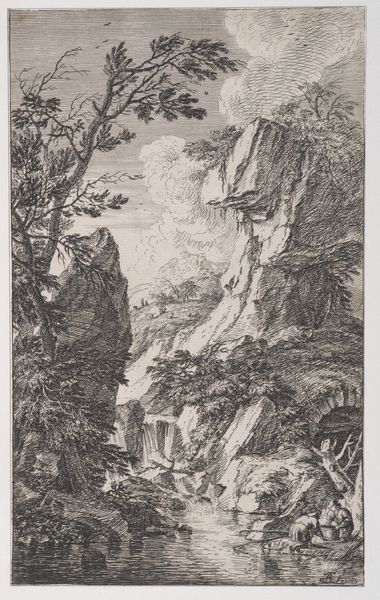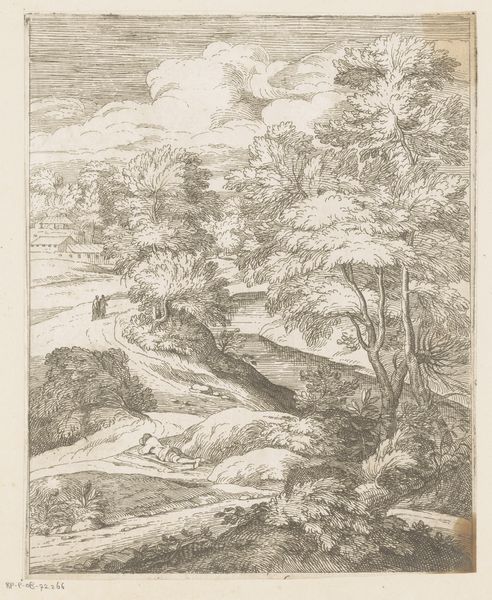
drawing, print, etching
#
drawing
#
neoclacissism
# print
#
pen sketch
#
etching
#
landscape
#
waterfall
#
line
#
cityscape
Dimensions: Sheet: 11 in. × 7 5/16 in. (28 × 18.5 cm) Plate: 5 7/8 × 4 13/16 in. (15 × 12.3 cm)
Copyright: Public Domain
Curator: Oh, there’s something haunting about this one. Like a half-remembered dream… It feels lonely but beautiful. Editor: This is "Waterfall after Breenberg," an etching by Jean-Jacques de Boissieu, created in 1764. It’s a stunning example of the Neoclassical movement's fascination with idealized landscapes. Curator: Ah, "idealized" is the right word. It's almost too perfect, isn’t it? The controlled lines, the almost architectural precision of that waterfall… It's romantic, but with a touch of constraint. Editor: Absolutely. It's an imagined landscape informed by existing etchings, Breenberg. De Boissieu, known for his detailed work, reinterprets earlier themes through a particularly ordered lens. The very act of taking a raw, natural form like a waterfall and rendering it with such controlled etching underscores the period's impulse to classify and control nature through art. Curator: Yes, and the figures perched at the top... distant observers, further emphasizing that separation between humanity and nature. But also between class and place, no? I find it slightly unsettling, as if nature is meant to be passively observed. Editor: That's a very keen observation. And one can't forget that these kinds of images were often consumed by elite audiences. Prints like this democratized access to visual art to a degree, while still very much circulating within privileged circles, reinforcing certain viewpoints and aesthetic ideals. Curator: It feels that in those days, art was much more than what was represented on a canvas—it had to reflect how life should be led according to certain social values. The technique in it is masterful, no question. But the coldness of this controlled wild feels artificial. I guess this landscape is an imagined place of the privileged. Editor: The image indeed mirrors those cultural expectations of the period. Well, it certainly gives a lot to ponder, doesn’t it? Curator: It really does! I see and feel something different each time I look at it.
Comments
No comments
Be the first to comment and join the conversation on the ultimate creative platform.
